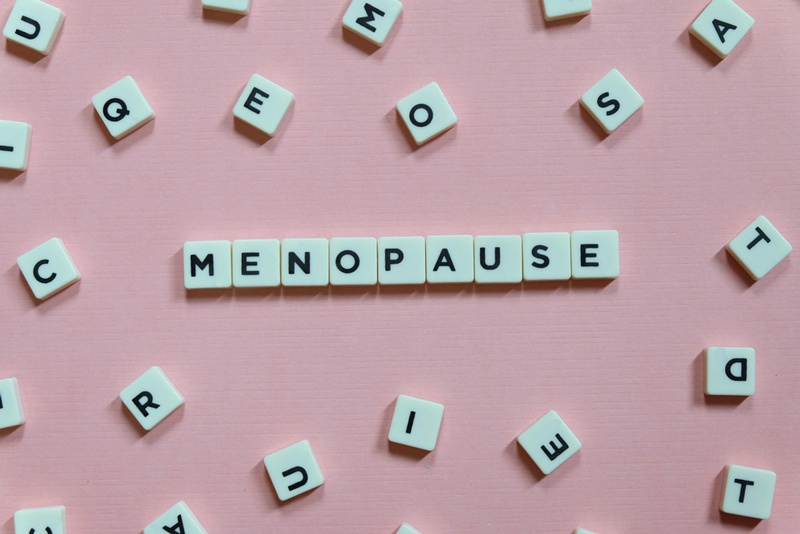There’s something particularly cruel about not being able to sleep when your body is already doing its best impression of a rollercoaster.

For me, it started suddenly—one night I was out by 10 p.m., the next I was lying awake until 3:17 a.m., scrolling through ceiling shadows and wondering if I’d ever sleep again. I didn’t immediately connect the dots, but yep—menopause had arrived, and it brought insomnia as its party trick.
I tried all the usual advice. I cut caffeine, started eating earlier, downloaded a sleep meditation app I never finished. Nothing stuck. And to make things worse, I was also waking up drenched in sweat, tossing my blanket off, pulling it back on, then off again. Every. Single. Night.
If you’re in this boat—or clinging to the life raft—here’s what actually helped me turn things around. Nothing overnight. But slowly, over weeks, I started to sleep again. Real, decent, honest-to-goodness sleep.
Here’s what helped, especially one change I never thought would matter: what I wore to bed.
Ditching the Old Pajamas Was Weirdly Game-Changing
I used to think pajamas were pajamas. Old cotton tee, maybe some leggings or pajama pants if it was cold. But once the night sweats started, everything I wore felt like it was trapping heat.
A friend mentioned trying the nightgown collection from Cool Jams—something lightweight, breathable, and designed specifically for hot sleepers. I rolled my eyes a little, but I was desperate. I ordered one, mostly out of frustration.
Let me tell you: it was a game-changer.
The fabric didn’t cling when I got warm, it didn’t feel wet or sticky after those 2 a.m. temperature spikes, and it stayed light and cool all night. It sounds ridiculous, but switching from my usual pajamas to something made to manage heat made a real difference in how long I stayed asleep.
And maybe just as importantly? It felt soft and relaxing to put on—like it was sending a signal to my brain: we’re done for the day now.
I Stopped Fighting Sleep and Started Preparing for It
Another shift was more about mindset. I realized I was treating bedtime like a deadline. I’d rush around, finish chores, hop in bed, stare at my phone for a bit, and then get frustrated when I didn’t instantly fall asleep.
Now? I give myself a little more of a buffer. About 30 minutes before I want to be asleep, I start turning down the lights. No more TV, no phone scrolling. I’ll read a bit—nothing heavy, usually just a few pages of something light—and if I’m really wired, I’ll take a warm shower. It helps to cool the body afterward, which weirdly makes it easier to fall asleep. (I didn’t believe that either, but science says it works.)
I Also Stopped Obsessing About Getting 8 Hours
This one’s tricky, because of course we all want 8 hours of uninterrupted sleep. But during menopause, sleep isn’t always linear—and forcing it makes it worse.
What helped me most was accepting that I might wake up in the night. And if I did? Instead of panicking or staring at the clock, I’d sit up, sip water, read a page or two of something boring, and then lie back down. Sometimes I’d fall asleep again within minutes. Sometimes not. But taking the pressure off helped keep the frustration low—and honestly, that was half the battle.
I Made My Bedroom an Anti-Oven
Let’s talk temperature. Even with the right pajamas, I realized my bedroom setup wasn’t helping. I swapped out my heavy comforter for a lighter quilt, added a fan to one side of the bed, and made sure the thermostat stayed a bit lower at night—even in winter.
There’s nothing worse than overheating at 2 a.m. and not being able to cool down. Layering blankets instead of using one massive one gave me more control, and I started sleeping more deeply without waking up in a sweat.
Magnesium Might Be the Unsung Hero
I’d read that magnesium helps some people sleep better, so I gave it a shot—just a basic supplement I found at the store. Did it magically fix everything? No. But I did notice I was falling asleep faster and waking up a little less.
It’s one of those “might help, probably won’t hurt” additions. If nothing else, it felt like I was trying something, which sometimes is enough to break the spiral of stress around sleep.
The Recap (Because I Wish Someone Had Given Me One)
Here’s what made the biggest difference for me, in case you’re standing in your kitchen at midnight Googling how to survive menopausal insomnia with one eye open:
- Cooling, moisture-wicking nightgown: Way more effective than I expected
- Wind-down time that isn’t screen-based: Reading helped more than I thought
- Not stressing about waking up: Gave myself permission to rest, not perform
- Cooler sleep environment: Fan + lighter blankets = fewer night sweats
- Magnesium supplement: Subtle, but helpful
Final Thoughts
If you’re dealing with sleep disruption during menopause, just know it’s not just you—and it’s not forever. There’s no one perfect fix, but small changes add up. For me, starting with something as basic as a nightgown that kept me cool at night was enough to break the cycle. It gave me one less thing to fight against.
And once I stopped waking up soaked and miserable, the rest slowly started to fall into place.
Sleep does come back. It might take some experimenting, a little patience, and maybe a new pajama drawer—but it’s possible. And honestly? Worth every effort.